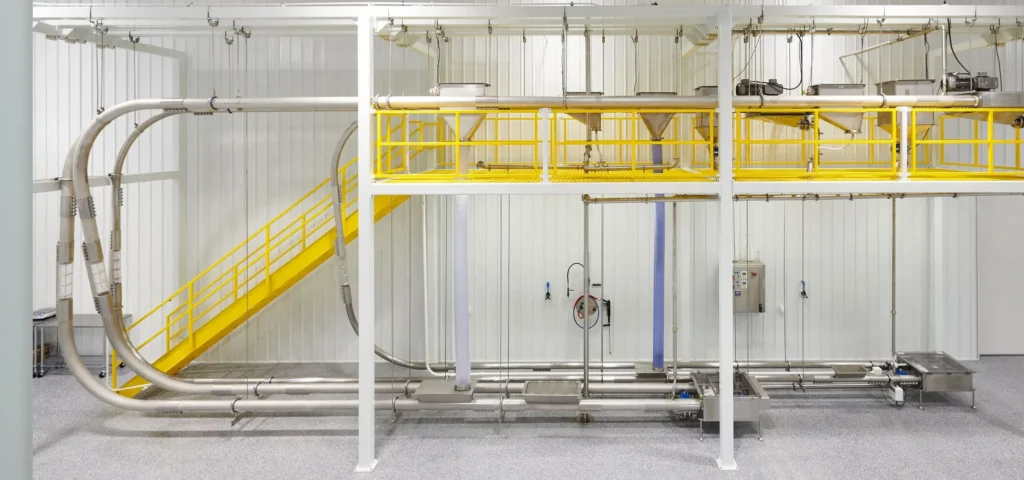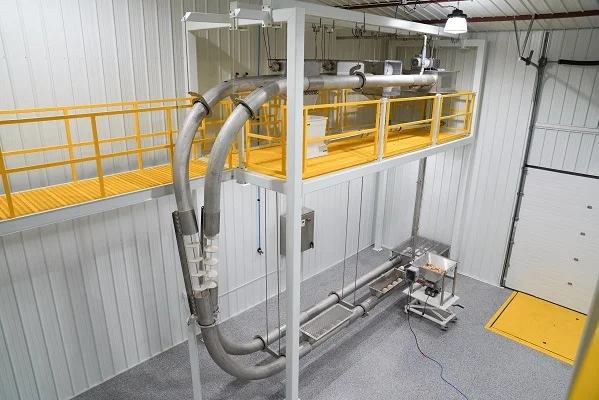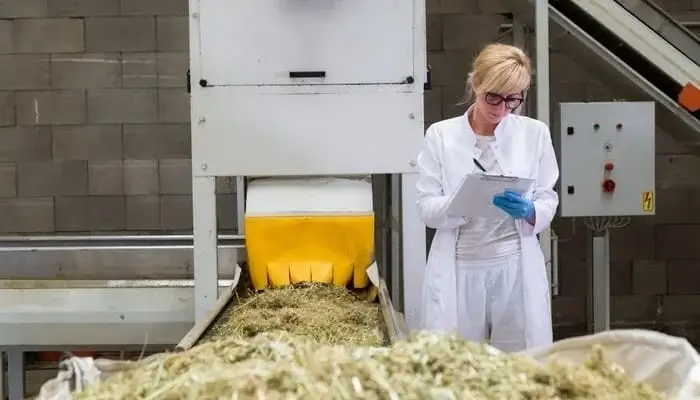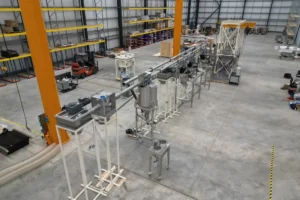Navigating the world of hemp processing can be a complex endeavor, given the plant’s diverse applications in today’s market. From its use in dietary products and clothing to its role in construction materials, understanding what is the best equipment to process hemp is crucial for maximizing its potential. This guide sheds light on the optimal machinery and techniques tailored specifically for hemp’s fiber and seed production.
Decoding Hemp Processing
Hemp, originating from the Cannabis Sativa species, has become a foundational element in a myriad of industrial and consumer goods. The 2018 Farm Bill’s passage marked a pivotal moment by delisting hemp from the Controlled Substances Act. This shift has led to an upsurge in the popularity of hemp-based products, such as hemp seed oil and CBD.
Primarily known for its fiber and seed, hemp’s applications span from dietary products and apparel to construction materials. The cultivation and subsequent processing techniques for hemp vary based on its targeted end product. In this article, we will delve into the optimal machinery required for the processing of hemp in the context of its fiber and seed production.
What Is the Best Equipment to Process Hemp?
Given hemp’s versatile nature, different machinery is tailored to extract its various components, from fibers to seeds and oil. Decorticators, for instance, are utilized to separate the outer bark from the inner core, which is essential for textile production.
Meanwhile, cold press machines are favored for extracting oil from hemp seeds, producing high-quality hemp seed oil. Furthermore, specialized dryers are employed post-harvest to preserve the integrity of the plant and prepare it for further processing.
As the demand for hemp-based products grows, understanding what is the best equipment to process hemp becomes ever more crucial for producers aiming to maintain efficiency and product excellence.

The Steps of Hemp Fiber Processing
Hemp fiber processing involves a series of intricate steps to transform raw hemp stalks into usable fiber for various applications. We’ll now explain in detail all the steps and techniques involved.
Hemp Destemming
For fiber production, the hemp farmer will put the harvest through hemp drying and bucking or de-budding/destemming, a process that removes the flower and leaves from the plant’s stem. During this harvest processing phase, the best destemming equipment will be one that does not pull or pop the hemp plant’s delicate flowers.
Instead, the machine should gently cut the flowers from the stem to ensure the crown buds stay intact. These flowers can be separated and processed to be used for other industrial hemp products.
Decortication and Retting
The hemp stalks then undergo hemp decortication and retting, which make up most of the processing requirements for hemp fiber production. The best equipment at this phase is an advanced decorticator.
The right machinery will use a reactor that separates the hemp stalks and turns them into pulp. Modern decorticators have a hammermill that effectively separates the hemp plant’s hurds from the bast fiber, removing its gums and resins.
Cleaning, Refining, Cutting
The bast fiber, the natural fiber that grows on the outside of the hemp stalks, is then cleaned, refined, and cut to size. These fibers can be pressed into compressed bails to be sent to hemp product manufacturing facilities that will purchase wholesale hemp and turn it into industrial products like textiles, rope, paper, clothing, and so on.
Pellet Processing
If the hemp is intended to make hemp pellets, the straw or stalks will undergo a different form of processing. For this application, the best equipment is a pelletizer machine that functions similarly to machines used for making grass pellets. Because hemp pellets are delicate and can easily fall apart when mishandled, they need a gentle conveyance system when they are being moved throughout the hemp processing facility.
Hemp Seed Processing
Hemp seed processing differs from fiber production because instead of using the hemp plant’s stalks, the focus is on the hemp flowers. These flowers contain seeds that, once processed, can be utilized for products like hemp seed oil, protein powders, and nutritious food additives.
Harvesting Process
Hemp farmers will use hemp farming equipment like a straight combine when harvesting the hemp crop. When the combined header is positioned just right and high enough, it will cut the crop just below the seed head. In this way, less of the plant’s fiber ends up in the combine.
Dehulling Process
The seeds will need to undergo drying, cleaning, and dehulling. Dehulling involves a hemp seed shelling machine that removes the seed’s outer shell. Seed dehulling/shelling equipment consists of an input hopper, a spiral elevator, and a unit that dehulls and separates the seeds.
The seed separator uses vibration to separate the seed from the shell gently. There is also a device that collects and discharges kernels, the seed’s crunchy skin that’s been separated, and hull residue. For any back-flowing materials, the equipment will be sent back for dehulling and separation again.
Using an Automatic Conveyor System for Transporting Seeds
Given the delicate nature of hemp seeds, their transportation from combines to drying locations, storage areas, or dehulling tools requires gentle handling. Historically, machinery such as screw augers, bucket lifts, air-driven conveyors, conveyor belt system, and vacuum conveyor setups were employed for transporting hemp components.
Yet, these methods often fell short of ensuring uniformity, with suboptimal entry points and rapid conveyor velocities. Such factors rendered them vulnerable to temperature fluctuations, which in turn harmed the seeds and resulted in diminished yields. A tubular conveyor can save the day here since it can protect hemp seeds during the conveying process.

Benefits of Using a Tubular Conveying System for Transporting Hemp Seeds
Hemp seeds are sensitive to heat and friction, making them prone to rupturing. When damaged, these seeds are easily contaminated and can spoil rapidly. An optimal transport method for seed processing utilizes a gentle automated conveyor system specifically crafted to preserve the seed’s quality and minimize losses.
Tubular cable and disc drag conveyor systems are tailored to protect sensitive items, such as hemp seeds, from harm during transitions between various processing stages and tools. Their flexible modular structure, adaptable to diverse diameters and substances, allows these automated conveyor systems to transport other hemp plant components and products, including hemp pellets.
The ideal tubular drag conveyor incorporates a design that merges conveyance tubes with cables, complemented by discs positioned at specific distances. Such a design ensures a tender movement of materials through an inlet inside a sealed tube. Employing overhead drive units propelled by sprockets, the hemp substances are carefully and gradually transitioned from entry points to exit ports.

Advanced Equipment Is Becoming More Prevalent
Following the 2018 Farm Bill’s enactment, there’s been a noticeable influx of businesses related to medical cannabis, CBD manufacturing, and industrial hemp farming. Modern hemp cultivators are pioneering industry standards by adopting sophisticated machinery, rendering manual harvesting and processing obsolete. The optimal equipment for hemp farming and processing largely hinges on the specific purpose of the hemp plant derivatives.
When handling hemp fiber, processors and manufacturers should utilize tools such as destemming and decortication devices. For hemp intended for seed generation, a specialized seed hulling machine becomes vital. However, irrespective of whether the focus is on hemp fiber, seeds, or biomass, reliable and gentle industrial conveyor systems tailored for these specific substances are crucial to ensure minimal waste and gentle movement of the raw materials.
Invest in a Tubular Conveying System
As the industry evolves, aligning with the right partners becomes paramount for success. Choosing leading conveyor systems manufacturers ensures not only that you get top-of-the-line equipment but also that it’s tailored to your unique needs. Further, with expert conveyor installation supervision, the implementation process becomes smooth, ensuring longevity and optimal operation. Investing in a tubular conveying system is a strategic step forward, guaranteeing efficiency, product safety, and a notable return on investment in the long run.If you’d like to know more about how best to move delicate hemp materials with a tubular conveyor, don’t hesitate to reach out to Cablevey Conveyors. We would be happy to answer any questions you may have and help you choose the right conveying system for your facilities.






